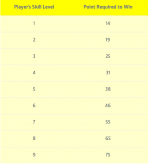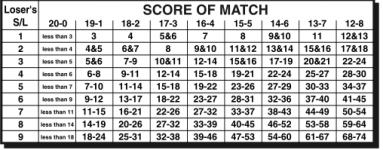APA 9-ball starts tonight. I figured it would be something fun to do every hump day.
I'm a C+ player, maybe a B player depending on who's judging. I've beaten the 9-ball ghost and 10-ball ghost on Diamond barbox's plenty (races to 7), but that's not using this wacky points system the APA/CPA uses.
I know 1-8 is worth 1 point and the 9 is worth 2 points, but what happens if I snap the 9? I only get 2 points? Would it be smarter to play aggressive or should I just punt balls around till I can get a run?
I think they start me as a 4 (I've never played APA 9-ball); How many "points" do I need to run to win?
I'm a C+ player, maybe a B player depending on who's judging. I've beaten the 9-ball ghost and 10-ball ghost on Diamond barbox's plenty (races to 7), but that's not using this wacky points system the APA/CPA uses.
I know 1-8 is worth 1 point and the 9 is worth 2 points, but what happens if I snap the 9? I only get 2 points? Would it be smarter to play aggressive or should I just punt balls around till I can get a run?
I think they start me as a 4 (I've never played APA 9-ball); How many "points" do I need to run to win?

